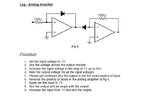Externet
Advanced Member level 2

- Joined
- Jan 29, 2004
- Messages
- 606
- Helped
- 28
- Reputation
- 58
- Reaction score
- 30
- Trophy points
- 1,308
- Location
- Mideast US
- Activity points
- 6,072
Hi.
Along the years and the presence of educated professionals in this board; what is found as common electronics misconceptions that may need to be addressed as originated by voids in proper learning of electronics ?
In other words; what do you think should be changed in text books to facilitate understanding and to avoid mistakes - what would you change/improve ?
Along the years and the presence of educated professionals in this board; what is found as common electronics misconceptions that may need to be addressed as originated by voids in proper learning of electronics ?
In other words; what do you think should be changed in text books to facilitate understanding and to avoid mistakes - what would you change/improve ?






